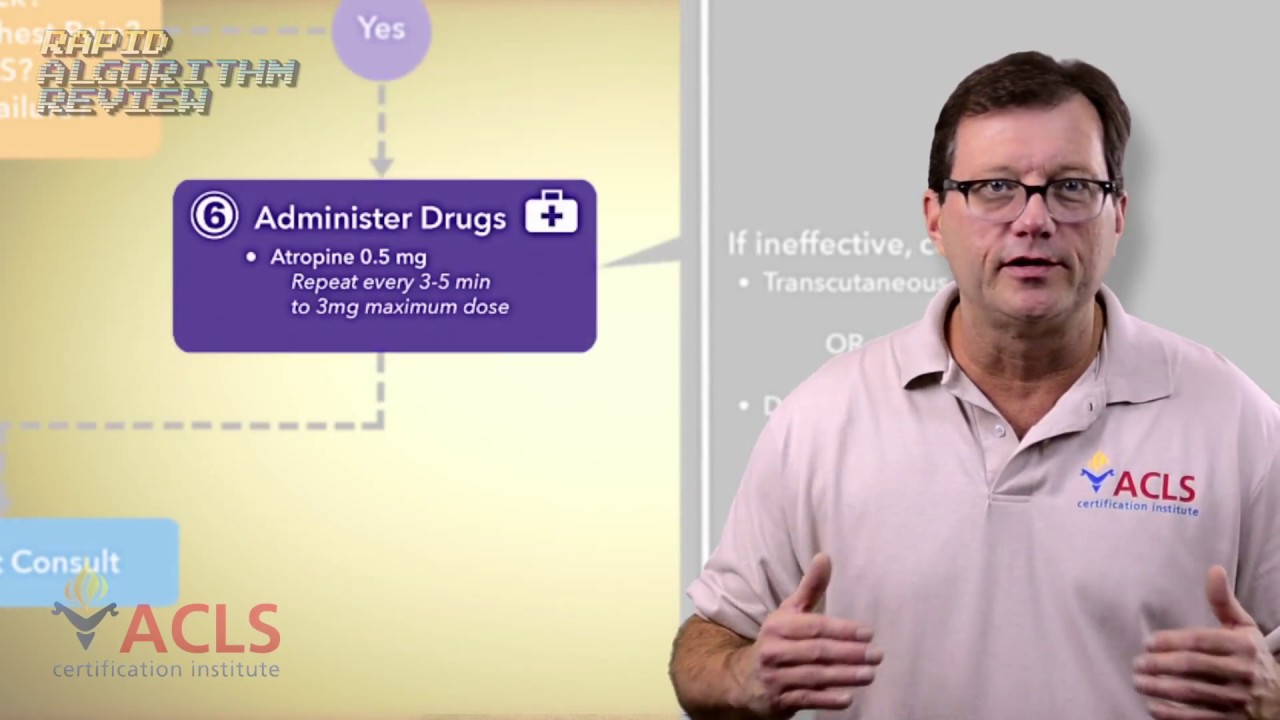Hi. I’m Mark from ACLS Certification Institute. Welcome to Rapid Algorithm Review. First up, bradycardia.
Step one, assess for bradycardia, which is generally a pulse below 50. Next, try to figure out what’s causing this bradycardia. Ask the patient, “What’s your normal heart rate?” If they’re an athlete, it may normally be low. Again, we’re treating the patient, not the rhythm. Quickly get a history, what medications they’re taking, pertinent past medical history. Next, supportive care. Get your patient on some oxygen. Remember, we’re trying to achieve an SPO2 of 94% to 95% (you might see that on a test). Get your IV. Get your 12-lead as long as it doesn’t delay care, but start your supportive care. Next, is there persistent bradycardia? We’re looking, again, for signs of shock: hypotension, altered mental status, poor perfusion. If the patient doesn’t have these, you’re fine; monitor your patient. If, yes, the patient is showing signs of shock, we’re moving right into drugs. First drug up: atropine sulfate 0.5 mg IV push, rapid. If the atropine is ineffective, consider a dopamine infusion or going right to transcutaneous pacing. Next, consider an expert consult. Get a cardiologist involved with this patient very quickly so we can determine the cause of the bradycardia.
Quickfire Review. One, the patient’s bradycardic and we know that. Two, try to figure out why they’re bradycardic. Start your supportive care: oxygen, IV, 12-lead. Start your supportive care. Next, is this persistent bradycardia causing hypotension and shock, altered mental status? No? Fine, monitor them. Get some more lab tests. Maybe seek an expert consultant there. If they are showing signs of hypoperfusion, drugs immediately. First drug up: atropine sulfate. If that doesn’t work, consider dopamine or transcutaneous pacing. Lastly, get an expert involved.
This has been Rapid Algorithm Review for bradycardia. I’m Mark for ACLS Certification Institute, and I will see you in the next algorithm.
Recommended Articles

Symptomatic Bradycardia Causes and Treatment
The determination on whether or not treatment is necessary for bradycardic events is generally based on the presence of symptoms. The clinical manifestations of bradycardia can vary widely from insidious symptoms to episodes of frank syncope.




